Mathieu Chagnon
Efficient Training of Volterra Series-Based Pre-distortion Filter Using Neural Networks
Dec 13, 2021

Abstract:We present a simple, efficient "direct learning" approach to train Volterra series-based digital pre-distortion filters using neural networks. We show its superior performance over conventional training methods using a 64-QAM 64-GBaud simulated transmitter with varying transmitter nonlinearity and noisy conditions.
End-to-End Learning of Joint Geometric and Probabilistic Constellation Shaping
Dec 09, 2021
Abstract:We present a novel autoencoder-based learning of joint geometric and probabilistic constellation shaping for coded-modulation systems. It can maximize either the mutual information (for symbol-metric decoding) or the generalized mutual information (for bit-metric decoding).
On the Comparison of Single-Carrier vs. Digital Multi-Carrier Signaling for Long-Haul Transmission of Probabilistically Shaped Constellation Formats
Sep 22, 2021


Abstract:We report on theoretical and experimental investigations of the nonlinear tolerance of single carrier and digital multicarrier approaches with probabilistically shaped constellations. Experimental transmission of PCS16QAM is assessed at 120 GBd over an ultra-long-haul distance.
Experimental Investigation of Deep Learning for Digital Signal Processing in Short Reach Optical Fiber Communications
May 18, 2020
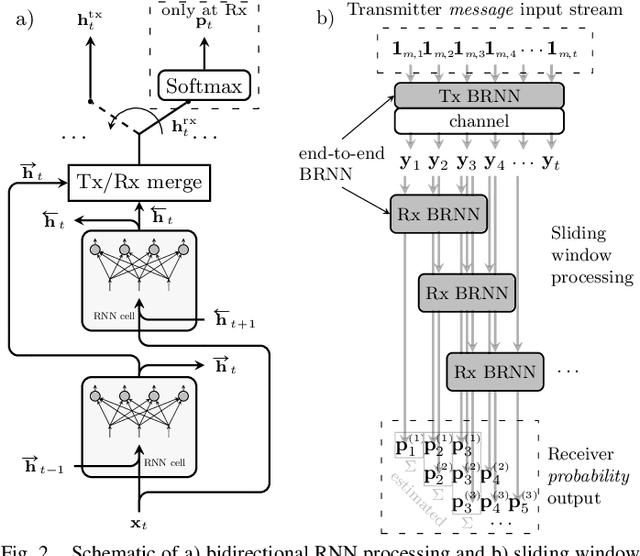
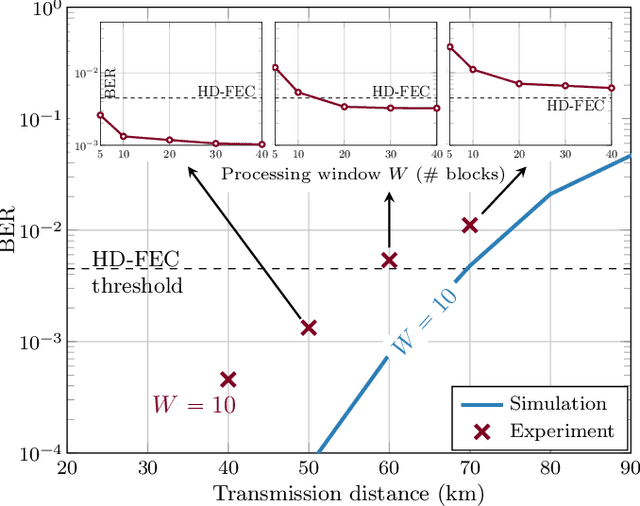
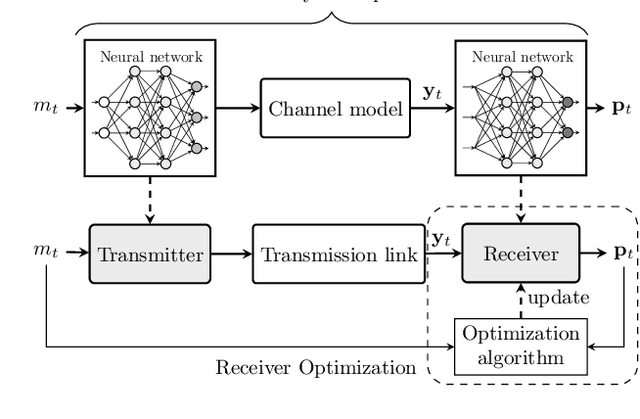
Abstract:We investigate methods for experimental performance enhancement of auto-encoders based on a recurrent neural network (RNN) for communication over dispersive nonlinear channels. In particular, our focus is on the recently proposed sliding window bidirectional RNN (SBRNN) optical fiber autoencoder. We show that adjusting the processing window in the sequence estimation algorithm at the receiver improves the reach of simple systems trained on a channel model and applied "as is" to the transmission link. Moreover, the collected experimental data was used to optimize the receiver neural network parameters, allowing to transmit 42 Gb/s with bit-error rate (BER) below the 6.7% hard-decision forward error correction threshold at distances up to 70km as well as 84 Gb/s at 20 km. The investigation of digital signal processing (DSP) optimized on experimental data is extended to pulse amplitude modulation with receivers performing sliding window sequence estimation using a feed-forward or a recurrent neural network as well as classical nonlinear Volterra equalization. Our results show that, for fixed algorithm memory, the DSP based on deep learning achieves an improved BER performance, allowing to increase the reach of the system.
Optical Fiber Communication Systems Based on End-to-End Deep Learning
May 18, 2020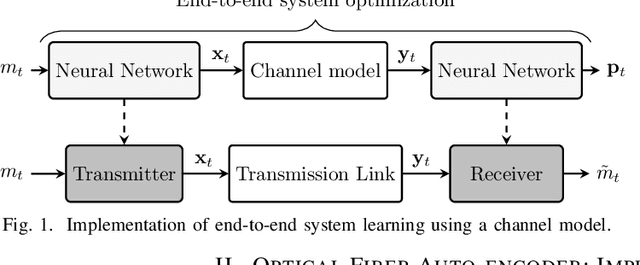
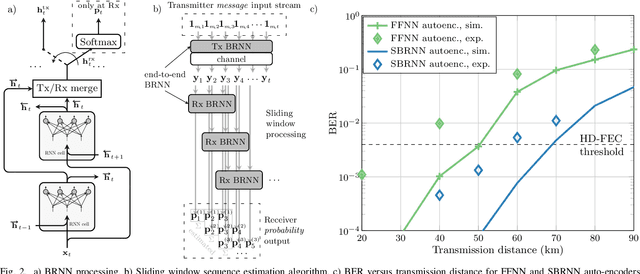
Abstract:We investigate end-to-end optimized optical transmission systems based on feedforward or bidirectional recurrent neural networks (BRNN) and deep learning. In particular, we report the first experimental demonstration of a BRNN auto-encoder, highlighting the performance improvement achieved with recurrent processing for communication over dispersive nonlinear channels.
Concept and Experimental Demonstration of Optical IM/DD End-to-End System Optimization using a Generative Model
Dec 17, 2019


Abstract:We perform an experimental end-to-end transceiver optimization via deep learning using a generative adversarial network to approximate the test-bed channel. Previously, optimization was only possible through a prior assumption of an explicit simplified channel model.
End-to-end Deep Learning of Optical Fiber Communications
Aug 03, 2018



Abstract:In this paper, we implement an optical fiber communication system as an end-to-end deep neural network, including the complete chain of transmitter, channel model, and receiver. This approach enables the optimization of the transceiver in a single end-to-end process. We illustrate the benefits of this method by applying it to intensity modulation/direct detection (IM/DD) systems and show that we can achieve bit error rates below the 6.7\% hard-decision forward error correction (HD-FEC) threshold. We model all componentry of the transmitter and receiver, as well as the fiber channel, and apply deep learning to find transmitter and receiver configurations minimizing the symbol error rate. We propose and verify in simulations a training method that yields robust and flexible transceivers that allow---without reconfiguration---reliable transmission over a large range of link dispersions. The results from end-to-end deep learning are successfully verified for the first time in an experiment. In particular, we achieve information rates of 42\,Gb/s below the HD-FEC threshold at distances beyond 40\,km. We find that our results outperform conventional IM/DD solutions based on 2 and 4 level pulse amplitude modulation (PAM2/PAM4) with feedforward equalization (FFE) at the receiver. Our study is the first step towards end-to-end deep learning-based optimization of optical fiber communication systems.
 Add to Chrome
Add to Chrome Add to Firefox
Add to Firefox Add to Edge
Add to Edge